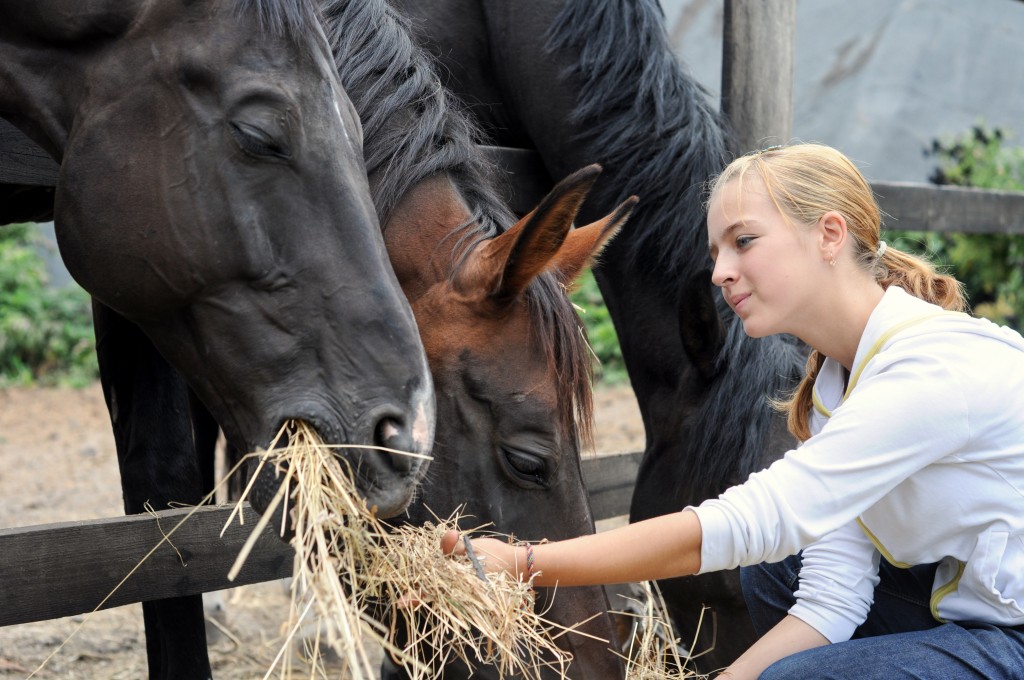Horse Health
When Hay for Your Horses Just Isn’t Enough
The majority of the horse’s digestive tract volume is dedicated to the microbial fermentation of forage, and therefore forage should be the majority of their daily feed intake. Forage comes in many forms from pasture to hay pellets to hydroponic fodder.
Regardless of where you live, it is likely that at some point in the year you have to supplement your horse’s diet with a forage source other than pasture. Traditionally, this supplemental forage is in the form of hay.
Hay is thought of as bulk and commonly regarded as low in nutritional value. The truth is that good quality hay can provide a horse with the majority of its nutritional needs. Many horses can derive adequate calories and protein from hay as well as much of their macro-mineral needs (calcium, phosphorous, magnesium, potassium). Keep in mind, hay is not perfect and trace mineral levels can be low, especially copper, zinc and in some geographic areas, selenium and the balance of the various minerals in the hay may not be optimal for the horse’s needs.
While good green hay provides more than adequate levels of the precursors to vitamin A, the sun drying process necessary to remove moisture will destroy much of the vitamin E and omega-3 fatty acids that are typically abundant in fresh grass.
For these reasons, even a horse seemingly doing well on hay alone should be provided a source of additional trace minerals, Omega-3 fatty acids and vitamin E. Other nutrients, especially nutraceuticals may be necessary for horses with greater nutritional needs.
Many products contain a laundry list of minerals and other nutrients, but often in insignificant quantities. It is important that the product you choose is formulated to provide what is generally lacking or out of balance in a forage/hay ration.
Grand Meadows formulas are properly balanced with correct ratios and follow the guidelines of NRC. Also impressive is that Grand Meadows is a founding member of the National Animal Supplement Council (NASC), an independent animal health supplement organization that works with regulatory agencies and animal supplement industry to provide Good Manufacturing Practices (GMP), FDA compliance, information on industry trends and fair marketing/label practices and many more important safe guidelines to make sure their formulas are safe and accurate.
Look for products that provide at least 50 percent of the National Research Council (NRC) guidelines for copper and zinc (which would be 50 mg of copper and 200 mg of zinc for an 1,100-lb horse) and 100 percent of vitamin E (500 IU). Note that these amounts are for a 1,100-pound horse that is not in work, and that your horse’s nutritional needs increase with its work level.

